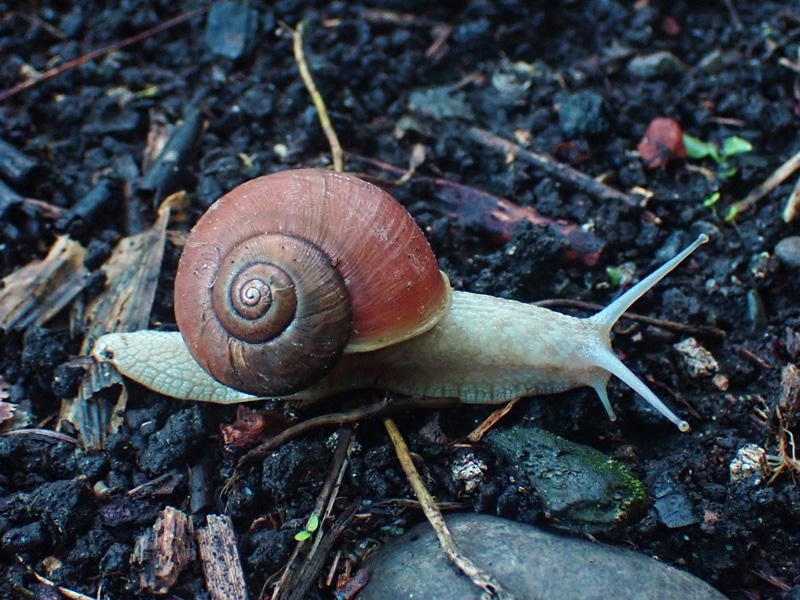Reviewed by Danielle Ellis, B.Sc.Nov 27 2023
Snails are frequently criticized for their sluggish and inefficient nature, and they are occasionally employed as a metaphor for laziness.
 Ezo_maimai. Image Credit: KyotoU/Yuta Morii.
Ezo_maimai. Image Credit: KyotoU/Yuta Morii.
Yet, a group of scientists from Kyoto and Hokkaido has recently unveiled that snails are far from indolent, especially when faced with threats.
Two species within the Karaftohelix genus—K editha and K gainesi—exhibited contrasting responses to stimuli resembling predators. Earlier research had documented that K gainesi, a land-dwelling snail mostly found in Hokkaido, adopted a defensive strategy against its natural foes by swinging its shell.
Snails usually seem to escape from predators by withdrawing into their shells, but our study is the first report of a snail escaping in top gear.”
Yuta Morii, Hakubi Center, Kyoto University
In the recent investigation, Morii's team observed that K gainesi, also locally known as ezo-maimai, enhances its forward movement by 20–30% in reaction to external stimuli resembling the predatory carabid beetle.
This led to an average speed boost from approximately 1.05 mm/sec to 1.27 and 1.35 mm/sec. Notably, K gainesi remains active both day and night, a rare characteristic among snails. In contrast, its nocturnal counterpart, K editha, or hime-maimai, withdraws into its shell when confronted with threats or discomfort.
Individuality is also not a uniquely human trait in that non-human animals also demonstrate this animal personality.”
Reiichi Ueki, Sapporo Keisei High School, Kyoto University
The pronounced variations in the fight-or-flight reactions exhibited by these snail species provide evidence of closely related species manifesting behavioral syndromes—a set of interrelated behaviors observed across distinct categories—during the speciation process.
In the context of these snails, K editha displays a reactive behavioral syndrome, often characterized as shy and passive. Conversely, K gainesi exhibits a proactive syndrome, being perceived as bold, active, or aggressive.
By showcasing multiple behavioral traits within the framework of animal personality and behavioral syndromes, it might be possible to understand their evolutionary processes better.”
Yuta Morii, Hakubi Center, Kyoto University
Morii added, “Collaborating on a volunteer basis with expert and non-expert citizens and students has also been deeply meaningful and rewarding, especially in terms of contributing to science literacy.”
Source:
Journal reference:
Morii, Y., et al. (2023) The divergence of mobility and activity associated with anti-predator adaptations in land snails. Behaviour. doi.org/10.1163/1568539X-bja10249.